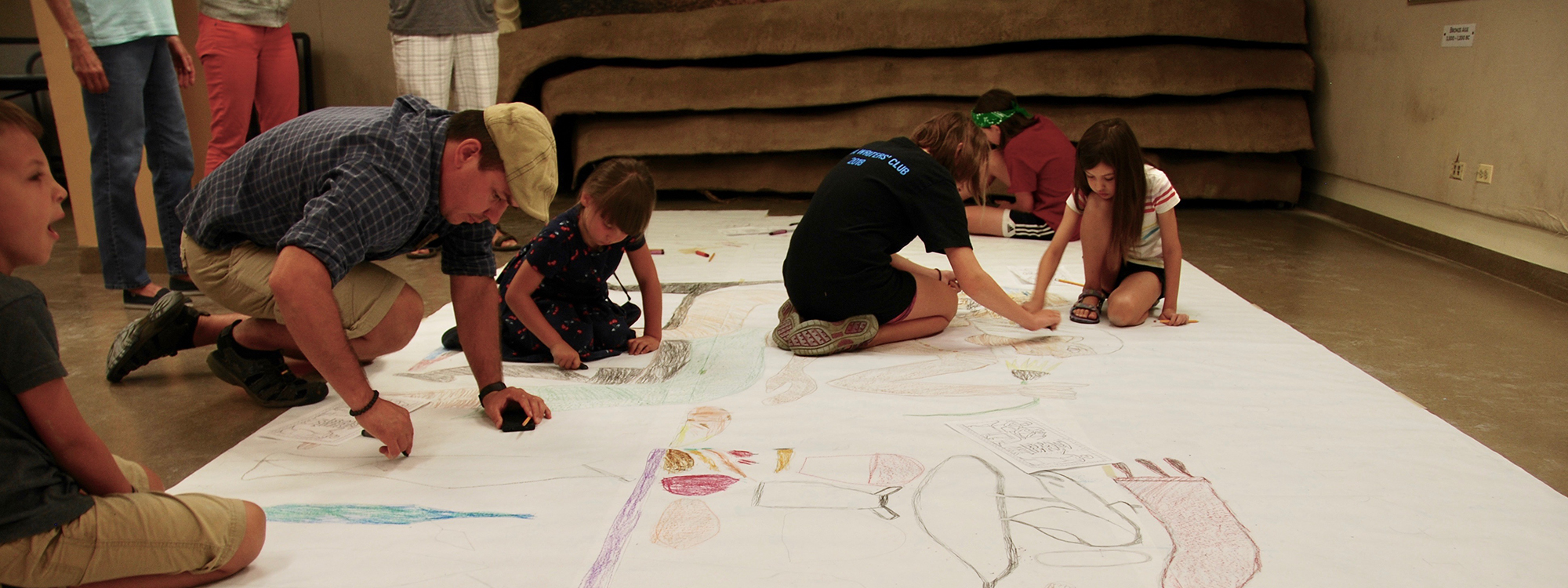
Kids and parents get to work at the Oriental Institute’s One. Big. Egyptian Mural event. (Photography by Dylan Petiprin, Class of 2019)
At the Oriental Institute, pint-sized archaeologists make their very own ancient Egyptian mural.
When kids hear “ancient Egypt,” what images first come to mind? Sphinxes? Pyramids? Royal tombs? More likely than not, many picture stone structures of some kind.
While the Oriental Institute may not have the requisite limestone or real estate for constructing Abu Simbel 2.0, it provided a group of five- to twelve-year-olds the next best thing. With crayons rather than chisels in hand, the participants at the One. Big. Egyptian Mural event got to emulate an artform that predates color by number by a couple thousand years.
According to Calgary Haines-Trautman, AB’17, the OI’s youth and family program coordinator, the event is one of a series meant to increase early involvement with ancient history.
“Our museum is a lot more academic and adult focused, but I think our kids programs really show how much you can do with the objects on display,” she says.
One. Big. Egyptian Mural certainly seemed to prove so. Before starting the project, parents and children alike took a guided tour through the Joseph and Mary Grimshaw Egyptian Gallery. They viewed some of the more necrotic artifacts (“Whoa, that mummy’s dead!”) and the 656 BC funerary reliefs that they would soon be replicating.
Equipped with a crash course in sepulchral design, the junior Egyptologists finished their tour and set upon the OI’s basement. There, a 7-by-15-foot butcher paper canvas awaited some serious doodling.
Ever notice how shoulder-to-waist ratios seem identical in ancient engravings? That’s because of an artistic grid system created by Egyptians. It ensured continuity of design across murals and was the kids’ first priority in creating their own.
They organized their grid-like blocks with yarn, a process that particularly excited six-year-old Naomi Shannon. “You have to put chalk in it, and that’s the funnest part I think,” she says, sprinkling bright blue dust onto the ground with impunity.
Chalky hands and all, the kids colored in their blue blocks using instructions from a predesigned handout. While the room’s organizationally inclined parents shouldered much of the artistic burden, the real progress was made among the kids themselves. As the blocks grew increasingly connected, so did the kids in the collective effort to create their pièce de résistance.
According to Haines-Trautman, increased cooperation is typical for these events. “In the beginning they’re a little bit shy, as usual. But they all sort of dove in and at one point it seemed like everybody had a job to do.”
They also, apparently, ended the day ready to return for more. Exiting the basement with her mom, Naomi made sure to let the room know, “I’ll come back again to answer more questions!”
